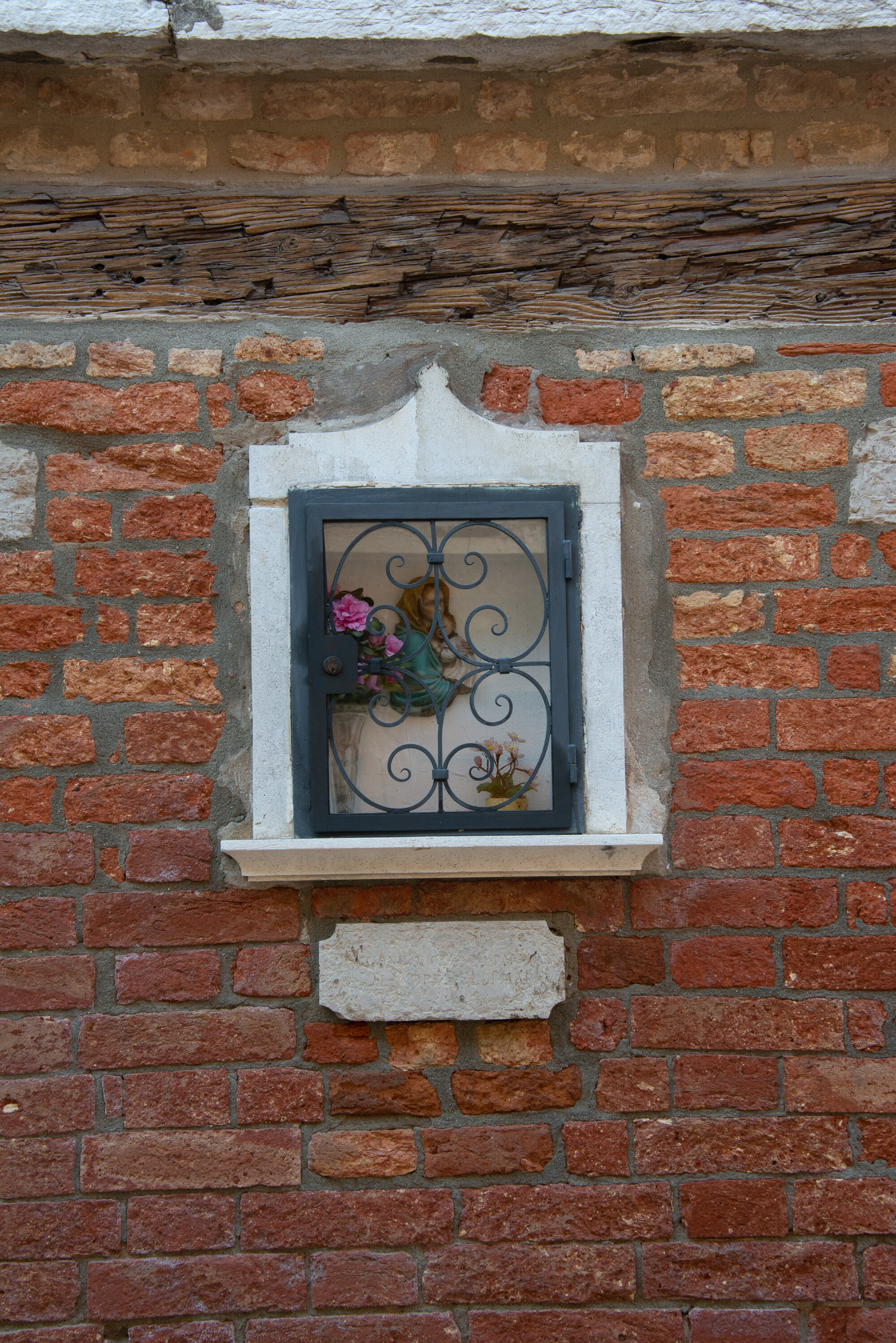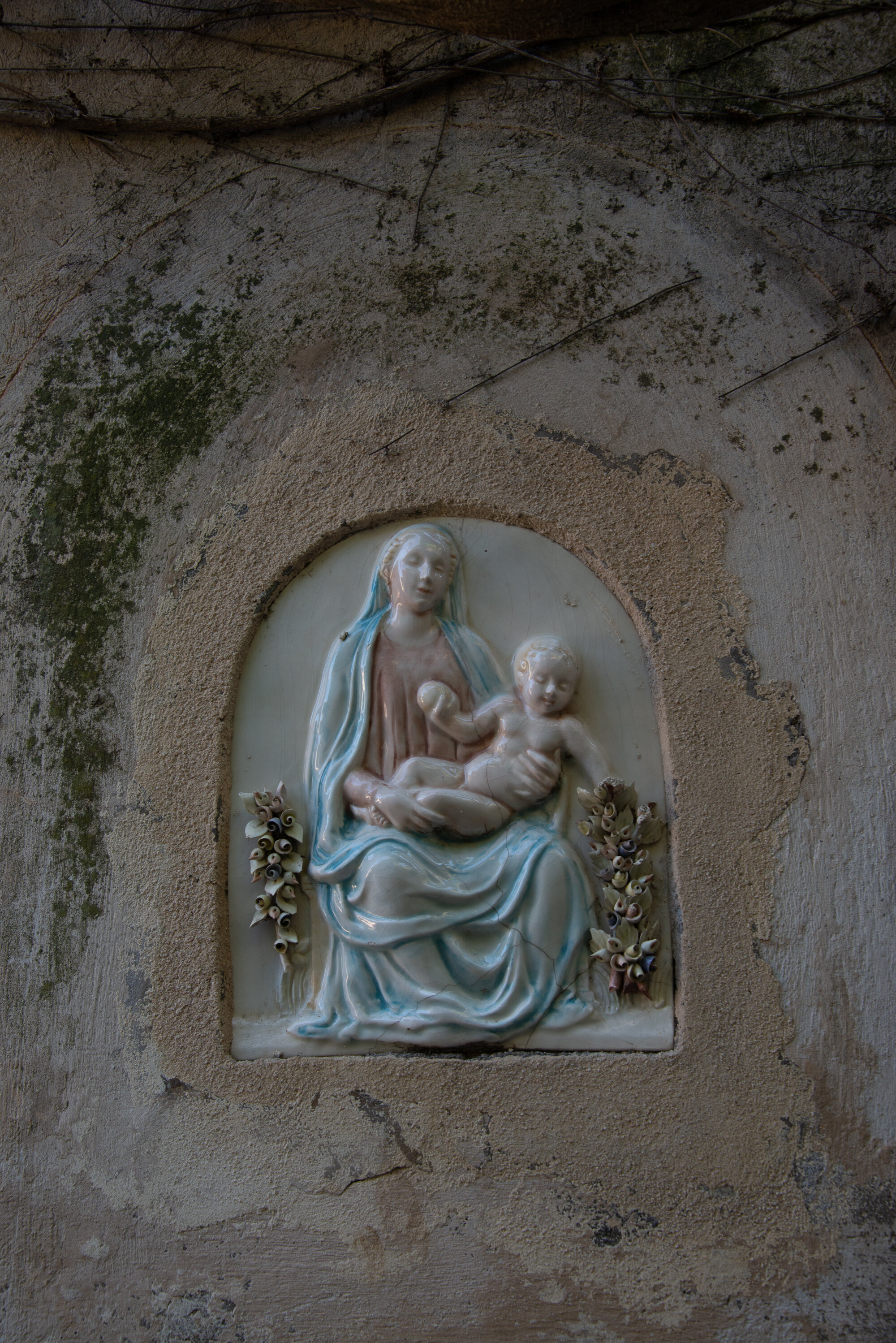Venice is a sanctuary for religious shrines. They are in the open, in closed spaces, large, small, stone, wood, enamel, metal, and what-have-you. Today, I present to you several shrines that I’ve come across in Venice.
I have grouped the shrines below into five categories:
Mary as the star;
Mary with a baby Jesus;
Mary with Jesus as a man;
A grown Jesus by himself; and,
Shrines with what appear to be saints of some note — some identified and some not.
Several of the shrines have an added adoring, worshiping crowd around the central figure.
“If only our own society prized such monumental reminders”
I am captivated by the effort that went into many of these works of adoration. Some are grandiose works sponsored by a patron or the Church, and they are large and ornate. Others are more obviously created by lay individuals, and these are more meaningful to me personally.
Many of the shrines are accompanied by flowers — mostly artificial. I’m not too much into artificial flowers, and I don’t see as much adoration in the one-time placement of artificial flowers as I do where fresh flowers have been periodically left by the faithful. In one shrine, flowers are part of the art work itself, painted on the substrate, along with Mary and a baby Jesus.
One shrine has a memorial (placed on a field of blue) that celebrates a family member for whom they are ‘Riconoscenti’, or Grateful, and which recognizes that he was in the war dated 1940-1945. I assume that Armando died in the war.
The oldest dated shrine has the date of 1702.
One of my favorite shrines is dedicated to Saint Antonio. This shrine is appreciated by me not only because the town of San Antonio is my birthplace, but because of the convenient slot for alms, which is labeled ‘Pani per I Poveri’ or “Bread for the Poor” (several other shrines have a less obvious slot, or place for a former slot, for donations). Saint Antonio (or Saint Anthony) is known for his devotion to the poor and the sick, and he was one of the most quickly canonized saints in church history. More importantly for those of us who can’t ever seem to find the car keys, he is the patron saint of lost things…and I’m not sure whether that means that he has found and has these things, or that he can help us find them.
For each shrine, I provide two photos — first will be the ‘snapshot’ as captured in my camera (often from quite a distance), and second will the the snapshot transformed into what I hope you would consider to be more of a work of art. So, this article has both historic content and photo transformation…a duet, of sorts.
Mary as the Star
Mary with a Baby Jesus
In a couple of these shrines, the baby Jesus is a bit obscure, in that He is shown as a medallion at Mary’s breast.
Mary with a Grown Jesus
Mary is a bit more obvious, but grown Jesus is there in the background.
Jesus as a Man
Only one in this category. A well-placed light which illuminates Jesus has been removed in the transformed version.
Shrines with What Appear to be Saints of Some Note
Here are three bonus shrines — not found in Venice, but along the Amalfi Coast and in Tuscany.
I find these shrines to be a gentle reminder: a reminder of my faith; a reminder to stop and reflect when I see them; a reminder to treat others as I want to be treated; and to love and pray for one another - especially our enemies. If only our own society prized such monumental reminders.
Ciao for now,
Steve







































